Jamaica Flag Meaning
A diagonal cross pattern dividing the flag into four triangles, with green triangles at top and bottom, black triangles at hoist and fly, and yellow diagonal cross, symbolizing the natural beauty, strength of the people, and golden sunshine of Jamaica.
- Continent
- North America
- Adopted
- 1962
- Ratio
- 1:2
- Colors
- green, yellow, black
- Designer
- Committee appointed by the Jamaican government
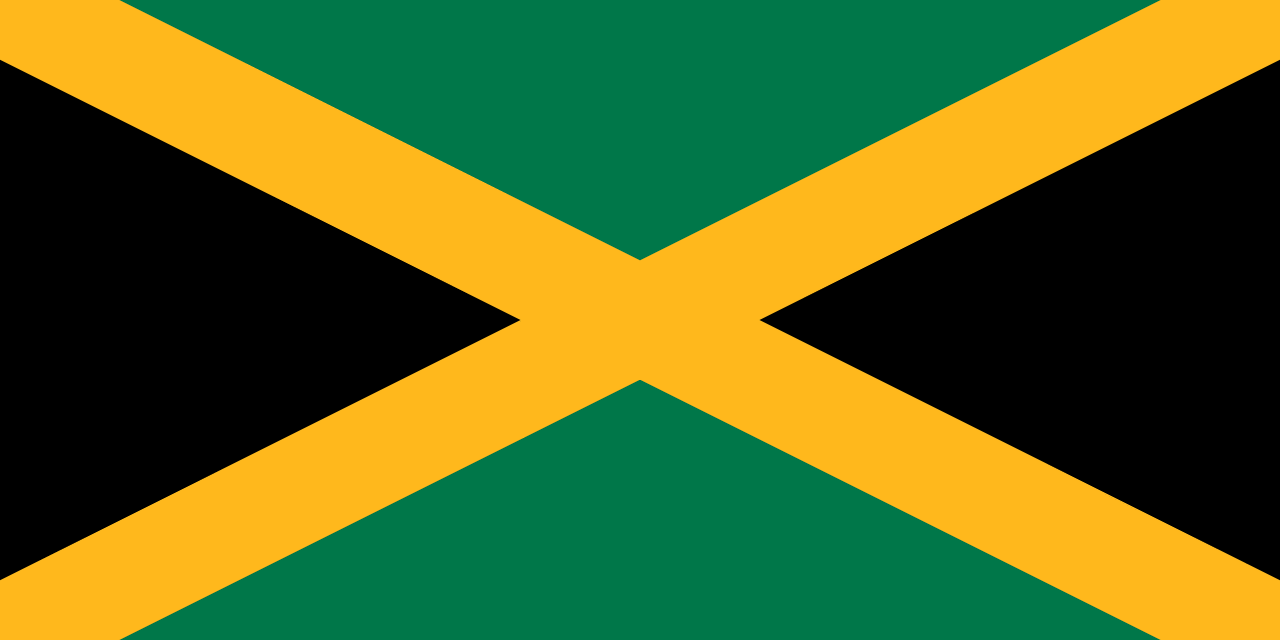
Symbolism
Green Triangles: Represent the lush vegetation and agricultural wealth of Jamaica, symbolizing hope, the fertile land, and the country's rich natural resources including its Blue Mountains and tropical forests.
Yellow Diagonal Cross: Represents the golden sunshine that bathes the island year-round and the mineral wealth of Jamaica, particularly bauxite mining, symbolizing the natural abundance and optimism of the nation.
Black Triangles: Represent the strength and creativity of the Jamaican people, acknowledging the African heritage of the majority population and their resilience through centuries of struggle and achievement.
History
- 1494-1655: Spanish colonial period under the flag of Spain, beginning with Christopher Columbus's arrival and establishment of Spanish settlements on the island.
- 1655-1962: British colonial period following Admiral William Penn's conquest, with Jamaica governed as a British colony and flying the Union Jack and various colonial ensigns.
- 1962: Jamaica gained independence from Britain on August 6, 1962, and adopted its distinctive flag design, becoming the first nation to use a flag without red, white, or blue colors.
- 1962-Present: The flag has remained unchanged since independence, representing the stable constitutional democracy and the cultural identity of modern Jamaica.
Trivia
- Jamaica's flag is the only national flag in the world that doesn't contain red, white, or blue colors, making it completely unique among world flags.
- The flag's design was chosen from hundreds of submissions in a national competition held prior to independence in 1962.
- The original motto associated with the flag colors was 'The sun shineth, the land is green, and the people are strong and creative.'
- Jamaica is the birthplace of reggae music and Bob Marley, who often incorporated the flag colors into his performances and album artwork.
- The flag represents the third-largest English-speaking country in the Americas, after the United States and Canada.
- Jamaica is home to the Blue Mountains, which produce some of the world's most expensive and sought-after coffee beans.
- The flag flies over a nation that has produced numerous Olympic champions, particularly in track and field, including Usain Bolt, the fastest man in history.
- Rastafarianism, which originated in Jamaica in the 1930s, often uses the flag colors along with red in its symbolism.
- The flag represents a country with over 120 rivers and numerous waterfalls, including the famous Dunn's River Falls.
- Jamaica was the first Caribbean country to gain independence in the West Indies Federation dissolution period.
- The flag appears on Jamaican currency alongside national heroes like Marcus Garvey and Alexander Bustamante.
- Pirates of the Caribbean history is deeply connected to Jamaica, with Port Royal once being known as the 'wickedest city on Earth.'
- The flag represents a nation where tourism is a major industry, with visitors drawn to beaches like Seven Mile Beach in Negril.
- Jamaica is the largest English-speaking island in the Caribbean, with the flag representing a population of nearly 3 million people.
- The Blue Hole, one of the world's most famous diving spots, lies off Jamaica's coast, though this natural wonder isn't directly represented on the flag.
Related Countries
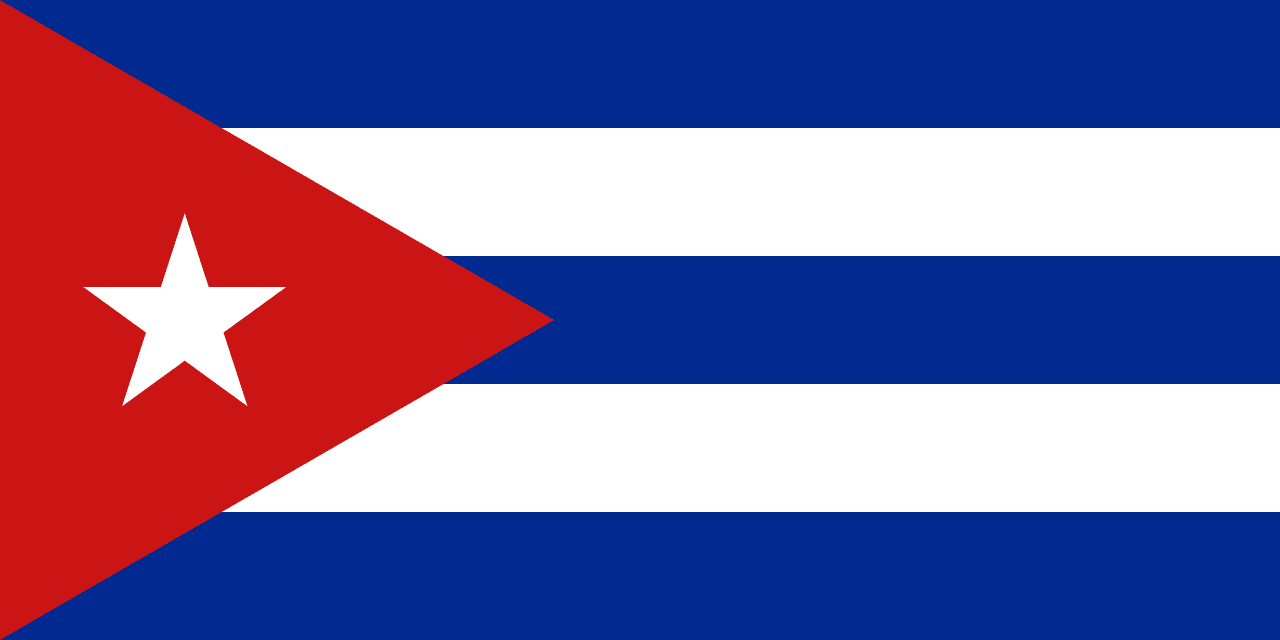
Cuba
North America
Five horizontal stripes alternating blue and white with a red equilateral triangle at the hoist containing a white five-pointed star, representing the three original provinces, purity, the blood of martyrs, and the independence of Cuba.
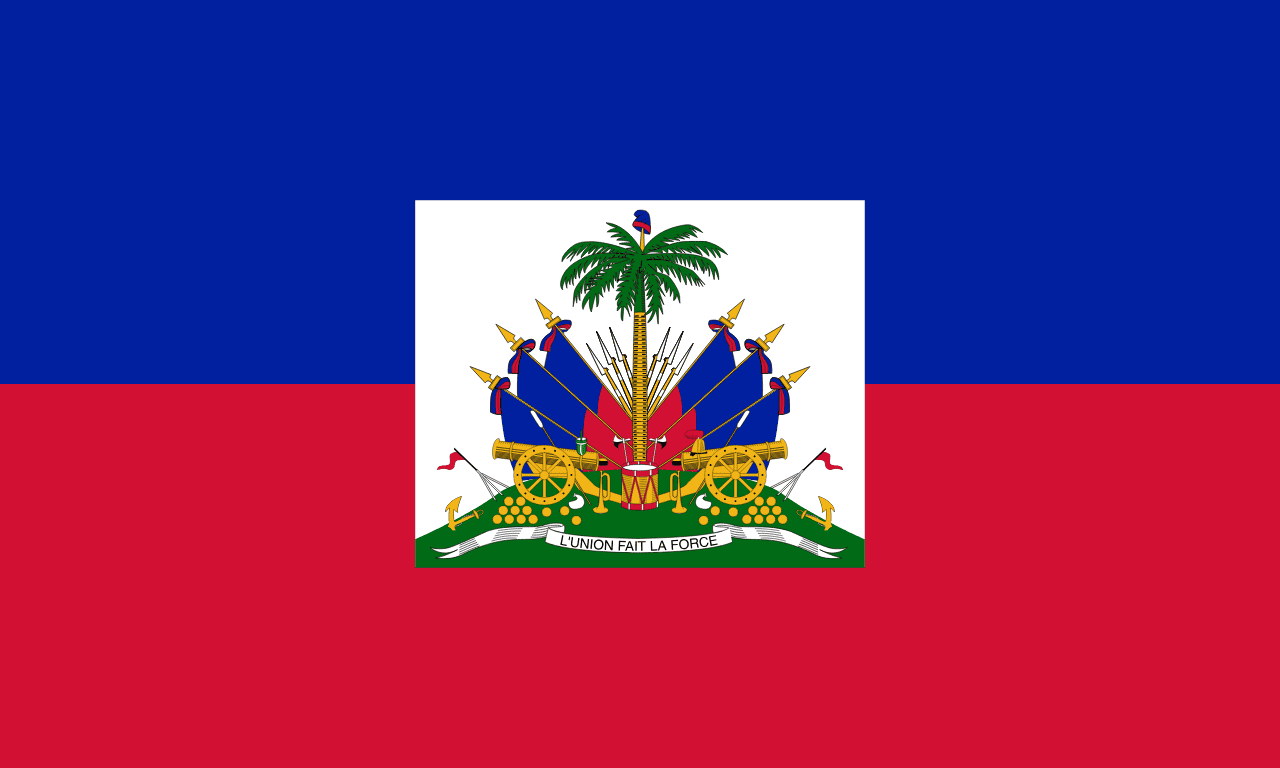
Haiti
North America
Two horizontal stripes of blue over red, representing the union of black and mixed-race Haitians and the blood shed for independence, making Haiti the first independent black republic and symbol of successful slave revolution.
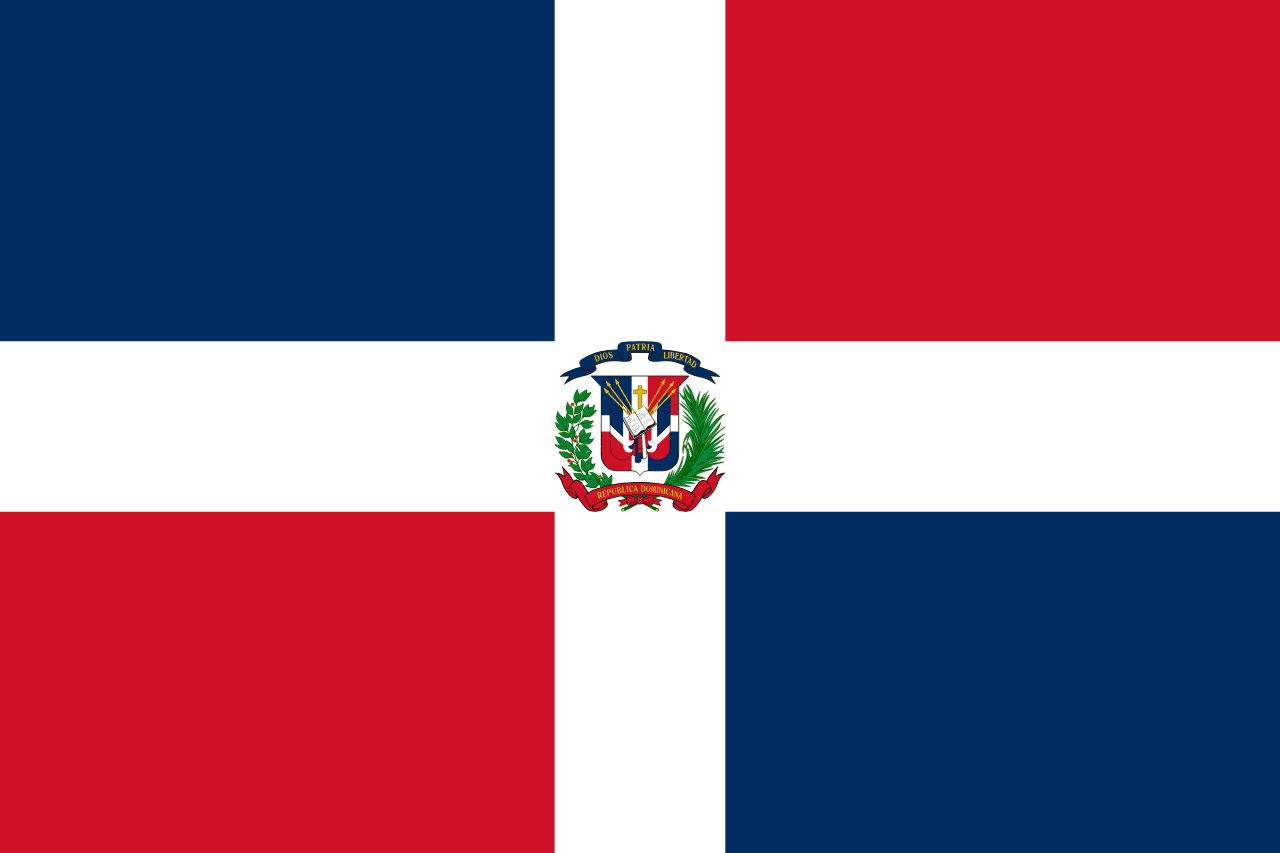
Dominican Republic
North America
Four quarters alternating blue and red separated by a white cross, with the national coat of arms in the center, representing liberty, the blood of heroes, salvation and peace, and the Christian faith of the Dominican people.
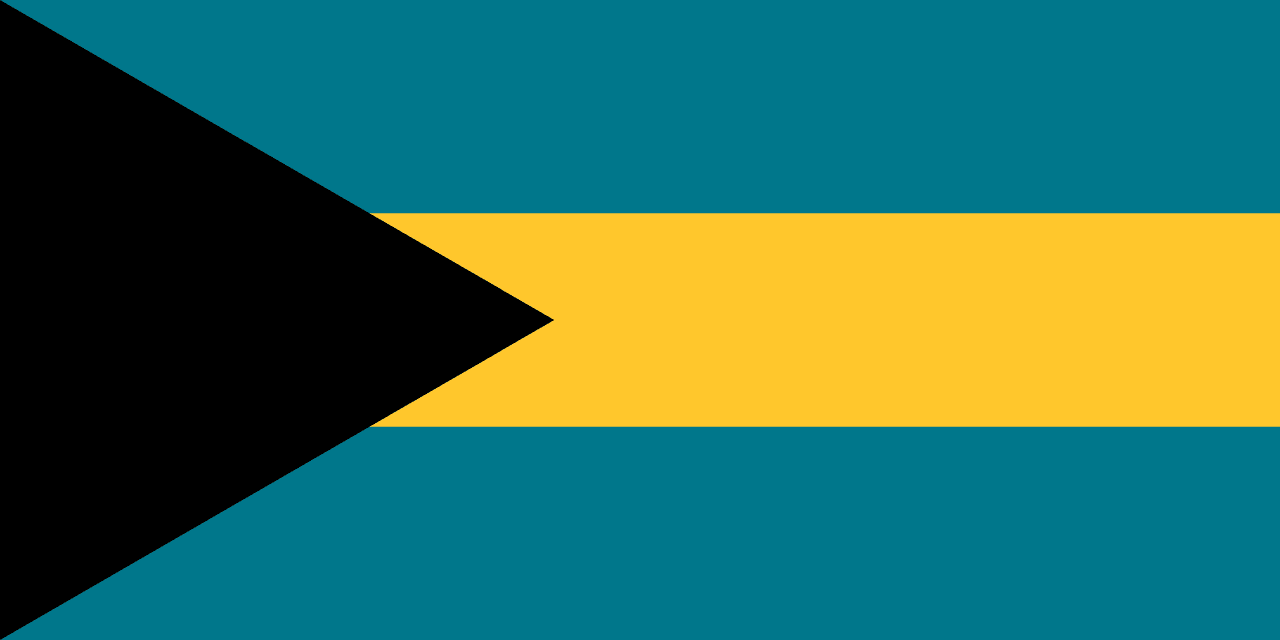
Bahamas
North America
Three horizontal stripes of aquamarine, gold, and aquamarine with a black equilateral triangle at the hoist, representing the waters surrounding the islands, the golden beaches and sunshine, and the strength and determination of the Bahamian people united in their love for their homeland.
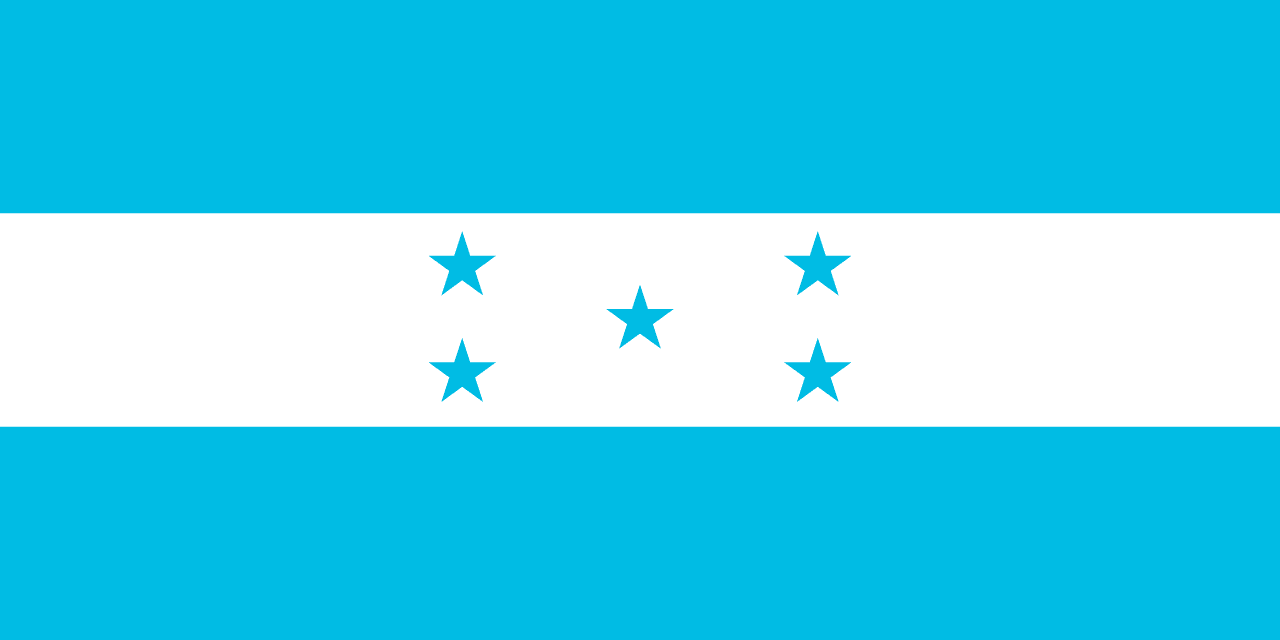
Honduras
North America
Three horizontal stripes of blue, white, and blue with five blue five-pointed stars arranged in an X pattern on the white stripe, representing the Pacific and Atlantic oceans, peace, and the hope for Central American unity.
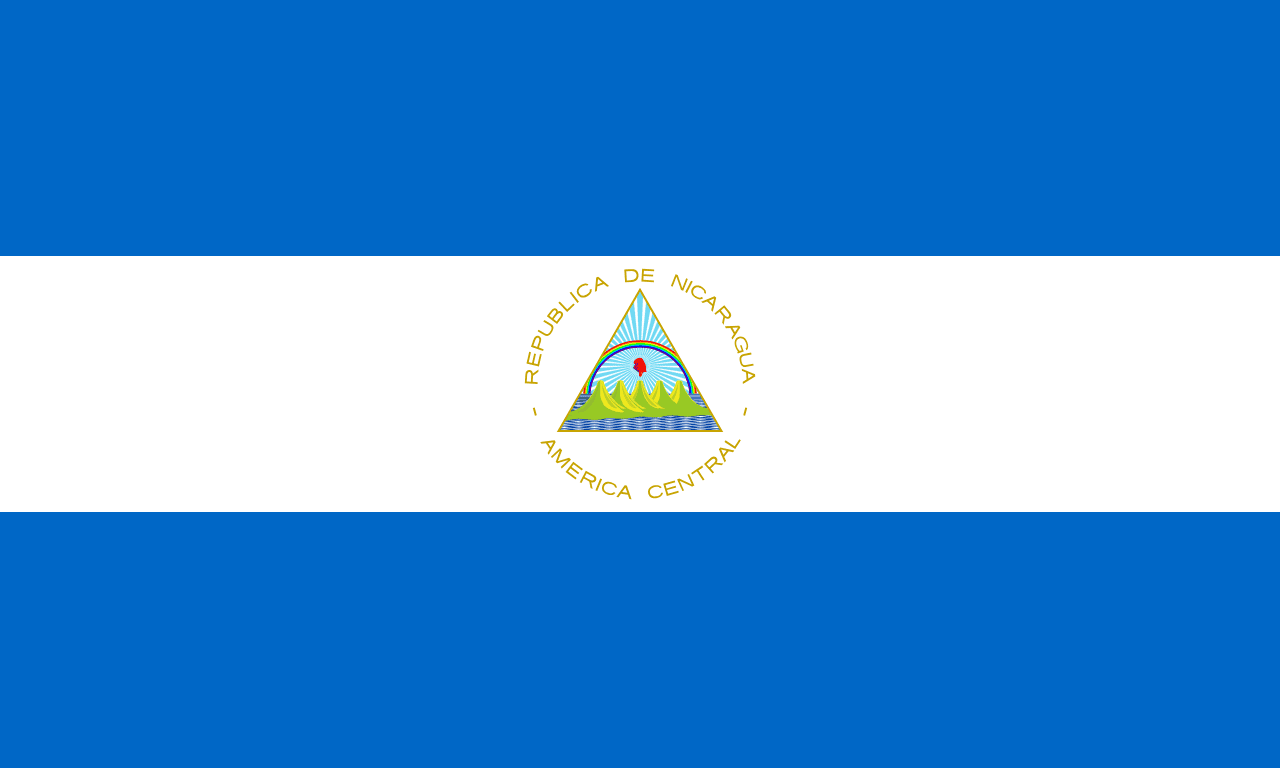
Nicaragua
North America
Three horizontal stripes of blue, white, and blue with the national coat of arms centered on the white stripe, representing Nicaragua's position between two oceans and its revolutionary ideals of liberty and peace.